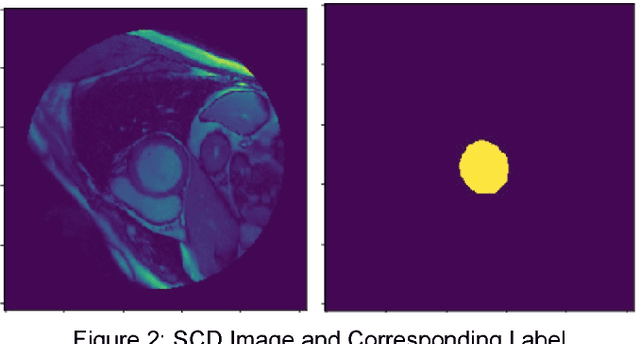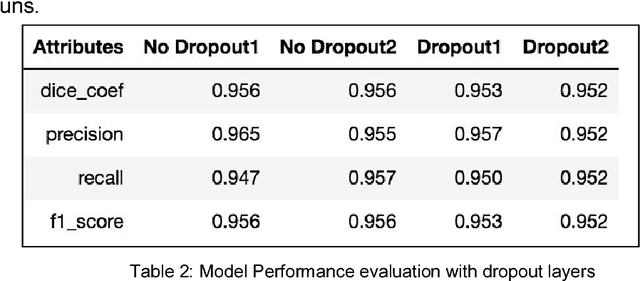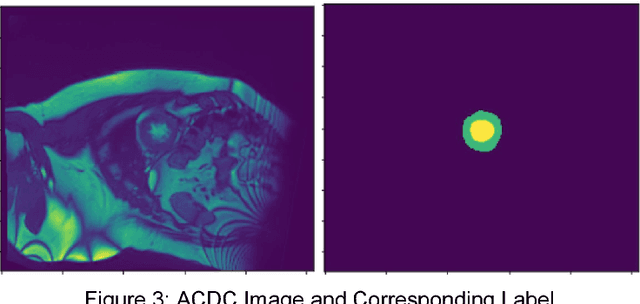Left Ventricle Segmentation and Volume Estimation on Cardiac MRI using Deep Learning
Paper and Code
Sep 14, 2018



In the United States, heart disease is the leading cause of death for males and females, accounting for 610,000 deaths each year [1]. Physicians use Magnetic Resonance Imaging (MRI) scans to take images of the heart in order to non-invasively estimate its structural and functional parameters for cardiovascular diagnosis and disease management. The end-systolic volume (ESV) and end-diastolic volume (EDV) of the left ventricle (LV), and the ejection fraction (EF) are indicators of heart disease. These measures can be derived from the segmented contours of the LV; thus, consistent and accurate segmentation of the LV from MRI images are critical to the accuracy of the ESV, EDV, and EF, and to non-invasive cardiac disease detection. In this work, various image preprocessing techniques, model configurations using the U-Net deep learning architecture, postprocessing methods, and approaches for volume estimation are investigated. An end-to-end analytics pipeline with multiple stages is provided for automated LV segmentation and volume estimation. First, image data are reformatted and processed from DICOM and NIfTI formats to raw images in array format. Secondly, raw images are processed with multiple image preprocessing methods and cropped to include only the Region of Interest (ROI). Thirdly, preprocessed images are segmented using U-Net models. Lastly, post processing of segmented images to remove extra contours along with intelligent slice and frame selection are applied, followed by calculation of the ESV, EDV, and EF. This analytics pipeline is implemented and runs on a distributed computing environment with a GPU cluster at the San Diego Supercomputer Center at UCSD.
 Add to Chrome
Add to Chrome Add to Firefox
Add to Firefox Add to Edge
Add to Edge